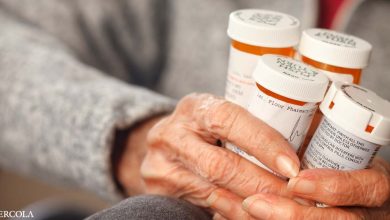New research urges governments to invest in healthcare digitization


The Partnership for Health System Sustainability and Resilience, or PHSSR, a collaboration between academia, nongovernmental life sciences and healthcare organizations, and businesses such as Philips published research in November spotlighting the urgency for governments to address gaps in healthcare, including funding data sharing and digitization.
Jan-Willem Scheijgrond, the global head of government and public affairs at Philips, spoke with HIMSS to discuss the research findings and how data sharing can improve healthcare systems and patient outcomes and reduce healthcare’s environmental impact.
Q. Can you talk about the importance of PHSSR’s research?
A. Sure. A lot of governments were saying that we needed more resilience in the healthcare system [during COVID]. And I was very interested in that. Let’s have a resilient healthcare system. And at that time, the demands from governments to Philips changed like every week.
First, it was we need oxygen, and then, we need different oxygen because we need more oxygen for these patients than we normally have in the ICU. So, can you do that differently? And then, we started looking at diagnostics. We need CT scanners. Well actually CT scanners don’t really work for communicable diseases where we don’t know if they have COVID or not. So, can you do a bedside X-ray and bedside ultrasound? And can you change the protocols? Can you adapt and develop algorithms?
And so, every time as we were progressing, and started to understand the concept of the disease, you know, they were testing the resilience of the healthcare system, and they were testing, you know, “What kind of innovation could we bring to help deal with this pandemic and, at the same time, keep the rest of the healthcare system open?” Now, keeping the rest of the healthcare system open, you know, we failed collectively because we basically shut it down.
Up to a point that people are starting to look beyond the COVID crisis, we said, “We really need to build resilience and avoid this from happening. So, maybe we should start to reorganize the healthcare system for the eventuality of the next pandemic, or that the pandemic will never go away.”
Then, there were the discussions of having two healthcare systems – one for communicable diseases like COVID, and one for other diseases like … noncommunicable diseases and trauma, and stuff like that. So, I thought, well, you know, in a company that wants to be meaningful and relevant in terms of its innovation, it needs to understand what a resilient healthcare system then means. Where are we going? And what does that look like?
And so, we went to the WHO and said, “Tell me, you have your framework for health systems and how to build resilience, governance, finance, service delivery to people, medicine, data.” What is a resilient healthcare system? Well, we talk about it. We don’t actually know.
When you scratch the surface, there’s nothing underneath it. But then, the World Economic Forum, they had also started thinking about this, as they often look at the future and what the future should bring. Generally, they are lofty in their aspirations, but this time it was quite relevant. And they had started the collaboration with the London School of Economics [LSE] and AstraZeneca to say, “Can we define what resilience means?”
How we measure it so that we can then have the political discussions to start working on a more resilient healthcare system in the future, because we, you know, we had concluded that the healthcare system failed. So, what are we going to then build? And while COVID tested the resilience of the healthcare system, now we need to see if we can actually have a sustainable health care system.
Because many of our healthcare systems have recovered, and they’ve said, “Okay, we’ve come out of this fairly okay.” But they’re now at such a high-cost level that’s not sustainable. So, we need to change. So, LSE developed a methodology based on the WHO framework. Are you familiar with the six pillars of the health system?
Q. Can you remind us of the six pillars?
A. So, generally acknowledged, there are so-called six pillars in the healthcare system – take one pillar out, the whole thing collapses. You have the governance. So, that is, you know, how is the health care system governed? And we’ve seen that during the times of crisis, you need a different governance than during times of normality.
Second, financing. Who pays for this? Why did so many hospitals go bankrupt during COVID? So, how do we finance the healthcare system during normality and during an eventuality of accumulated stress, or a pandemic, or a war, or climate change?
The third pillar is service delivery. How do we organize the healthcare system? Where do we deliver the service?
[The fourth pillar is a health workforce.]
The fifth pillar is, of course, where we come in: technology and medicine. And that’s, of course, where AstraZeneca came in. And they were, of course, working on the vaccine. We were working on devices, diagnostics and therapy. So, how do you introduce technology? And we’ve seen that in countries like the United States, but also in the Netherlands and in Belgium, where there’s a big, high-tech and pharma industry, there was good collaboration with the authorities to very quickly adopt new innovations and have emergency approval.
So, that worked very well. But in countries that did not have that expertise, like Portugal, or like Greece, or even like Japan that had really taken a step back on innovation, and medtech, and pharmaceuticals, they’ve seen that bringing innovation to the market during times of crisis has really suffered.
The sixth pillar is data. So, what is the data, whether that’s digital or whether it’s analog data? The WHO doesn’t care if it’s spreadsheets or whether it’s … Data is data. What is the data that underpins the functioning of your healthcare system and allows you to assess whether your healthcare system is functioning so that your governance, your findings and all the other things start to work? So, those are the six pillars.
So, the London School of Economics transformed that into more than 400 different questions about those six pillars to understand what would determine whether something is resilient or not. And how do we then make sure that that becomes sustainable? What do you then need to measure? Now, what we started to discover is that the healthcare system, the way it is structured, doesn’t measure the right kind of things for sustainability or resilience.
We found very clearly during COVID all the problems in our healthcare system that were exacerbated. So, now, we need and that was the whole purpose of that PHSSR instrument. Let’s find the gaps. And in each country, they were slightly different. And then, so, what do we need? And what do we learn from each other to have the right interventions by policymakers, but also by patient organizations, by healthcare professionals, by hospitals, by us? And what was our role, then collectively, to start strengthening the system?
What you very often see and also in the United States, to be honest, people said the healthcare system is broken and we need to fix it, and I have a solution. And very often, the solution is based on pre-COVID. Somebody had a political agenda and said, this is my opportunity to fund my political agenda from pre-COVID.
But we need to understand that we need to learn from the mistakes from COVID. Now, what do politicians not like? To learn from their mistakes because they have to admit, “Yes, I was the Minister of Health, and these are the things I did wrong during COVID.” Yeah, okay. Well, that’s the end of your political career. So, it is very difficult to enter into a discussion with policymakers about mistakes they made and what we have learned from that.
So, we’ve had to find a very safe space. It’s nice to have the London School of Economics, that is, you know, trusted everywhere. It’s not political. It is academic. And we keep an arm’s length distance to the London School of Economics. Their report, their research, needs to be completely reliable, trusted, not influenced by us. You know, we’re from Philips, so a CT scan and an MRI is the solution to any problem, according to Philips. Yeah, that’s what we believe.
But LSE knows that we are biased. And we think that better diagnostics is the solution to any healthcare system. So then, we need to keep that. And if people think that we are influencing LSD studies, then it is no longer reliable, and then, you cannot have that discussion, and you cannot learn from the mistakes. We need to understand what our role is then.
Now, in the United States, they also started [assessing the gaps]. KPMG joined, and then, the WHO Foundation joined. OECD [the Organisation for Economic Co-operation and Development] said, “Look, we’re going to share our research teams with these initiatives.” The World Bank said they were going to share that.
What KPMG said during the COVID crisis in the U.S. is we need to start coupling all these data points in more effective ways so we understand where the gaps are, and we can start to design the policy interventions and then measure the impact real-time. Because what you want as a policy intervention is you want to measure is it effective or not? What we do very often is we have a problem, we say, “Okay, this is the solution,” and then we forget to put the monitoring framework in place to actually assess afterwards whether it was successful.
So, they connected 200,000 data points to understand whether the health system was working. And the beauty was, a lot of these data points are from the healthcare system itself, but most of them are from outside the healthcare system but had an impact on health outcomes. And this is where one of the things that is really important in the United States, but also elsewhere, that came out of the report, is that we see so many inequities in healthcare around the world.
Now, we know in the United States that, for example, African American women have a three to five times higher chance of dying during pregnancy than white American women. And in Canada, there’s innate discrimination in the healthcare system, so indigenous people have a much higher risk of dying during any phase of their lives than non-Indigenous people in Canada because of the discrimination.
So, if you start to understand that, then you can start to have zip code interventions. So, there’s zip code inequity. You can see – depending on the zip code, what your social determinants in the healthcare are, whether there’s a pharmacy on the corner, whether it’s close to your GP, whether you have a phone number to actually call for telehealth, whether you have internet, whether there’s public transport, whether the air is clean and whether there’s a river flowing by – that determines the health outcomes.
So many of them are in the healthcare system, but most of them are outside the healthcare system. And then you can start measuring if I want to improve health literacy and improve adherence to, for example, pharmaceutical, you know, treatments, or going to my antenatal care while I’m pregnant. What are some of the most useful interventions to improve the uptake? Now, very often, we see it has worked with grassroots organizations. But one of the interventions was to give access to the internet. Is there internet access, so they can find the information?
We could actually track access to the internet and health outcomes by correlating them. And that, I think, is important about the data transformation that we’ve seen, is super essential in this PHSSR element. They said what we see is that there’s a lot of data out there. There’s an “infodemic,” but very often the quality of the data is not sufficient.
We’re also measuring the wrong things, if we want to go measure resilience, outcomes, sustainability. And then the third element is we are measuring things, and then we’re collecting the data, but we have no idea what to do with the data. So, we can’t interpret it. If you cannot link internet access to better antenatal care because you don’t know how to couple those, you don’t know how to measure those, then you’re never going to measure the impact of your policy interventions.
So, there’s better data, different data, and understanding the data that has come out pretty much everywhere around the world in the studies. So far, we’ve done assessments in 21 countries, ranging from Japan to Vietnam, Poland, France, Spain, Germany, Brazil, Canada. And we see a lot of similarities in the outcomes, but also a lot of differences, because healthcare is always local.
Q. What are some of the similarities that you’ve seen?
A. Healthcare is underinvested everywhere. And despite the economic downturn, we need to start investing more structurally along those six different lines. We’ve seen that, as an issue of governance and decision-making, the biggest challenge is that the decision-making processes during a crisis are not clearly defined, and still not afterwards.
But the most important one is that we haven’t got the right data to actually help governments measure actionable data to actually make the interventions. We see that inequities have increased in health access during COVID, but that we very often still do not understand what the causes are of those inequities.
We can assess that there are inequities. But if we analyze them very often, we lack the data to really go down at zip code level to understand what causes those inequities, and therefore we lack the clarity to actually intervene. Well, we see, politically, a lot of inequities is a big theme in elections. People don’t have the data to actually understand what the impact is of their interventions.
Q. Do you think increasing or improving interoperability would help people gain the data that they need? But then, how would you do that as far as governments go?
A. That’s governance again. How do you make sure that the data becomes available and transparent? Many countries were not making data available. So, to give you an example, in Japan, they had mortality data, and they could see in which district the mortality was increasing for COVID, but they didn’t share. So, researchers and people at the local level couldn’t actually take the measures quickly enough.
On the other hand, we saw Abu Dhabi. Abu Dhabi in the middle of COVID was organizing the World Expo 2020. Well, that didn’t happen. So then, I think it was 2021, last year, they said, okay, if we would just have the data to help us predict. They were suffering from the problem, should we have the expo, yes or no? Or should we just completely cancel it for another year? And there was a lot of pressure to have it open to have the expo.
And so, then, the government said, “Well, if we will be able to connect 300 different dashboards that we have in the country about COVID, can we then predict, use it for predictive analytics to see how would COVID spread at the expo under these circumstances?” So, they were starting to develop scenarios, and eventually they were confident enough in the data that they could open up the expo, have massive numbers of people there without ever having to go into lockdown.
So, that is where we could see in some countries, like in Abu Dhabi, they say, “Okay, you must have the data, and you can, not only start to, as I said, have better data, different data, and analyzing the data, then you can start using it for predictive analytics.”
If you can predict outcomes, if you can predict developments in your healthcare system, then you’re empowering the governments to actually take the right interventions, where you’re relatively confident on what the outcome is going to be of your intervention, like opening up the World Expo. So, interoperability is supercritical, because, what I said earlier, if you cannot connect internet access to antenatal care outcomes because of the interoperability lack or some of the other availability – availability and interoperability, I think those are the two important points – then you will never measure the outcome of your interventions.
Q. So, what are the next steps for PHSSR?
A. All the research teams have shared their outcomes with each other so we can find the commonalities, the highest level around the conclusions. We need to invest more in healthcare. We need to address the workforce shortage and capabilities, and we need to address the inequities through better data.
Now, to get more granular, we go back into the country because that’s where the work really needs to happen. So, a lot of this is recommendations then also become very specific to a country. So, in the 21 countries, we’re having the country dialogues, and we continue with the country dialogues, involving all the stakeholders. So, also companies like Philips will be at the table and with the policymakers and say, “Okay, now that we’ve seen the gaps in your healthcare system, how are we going to address that in Portugal?”
And that’s going to be different than how we addressed it in Canada or in Japan. That’s why the London School of Economics uses its global network of academic partners. They supervise the research, but they always work with the local research partners. So, we have a Japanese university. We have two Polish universities. We have a Portuguese university, a Greek university. They do the research, and they are trusted by the local partners in the same way as LSE and Harvard are trusted. So, we have to have global credibility, local credibility, and then we have the stakeholder dialogues and say, “Okay, what does that mean for us? And how can we design policy interventions that work?”
And then for us, what is important, as Philips, what we have all decided is we’re going to invest in healthcare. So, governments are putting these in in the United States. There are massive investment plans for the healthcare transformation in Europe. There are massive investment plans. The World Bank has massive investment plans for healthcare transformation.
We want to make sure that those transformations are guided by a better understanding of where we were successful in COVID, where we failed and what it takes to sustain that level of quality care after COVID, so that everybody has access to quality care on an equal basis. So, take out the inequities. And then, we can start to innovate.
One of the elements that is different from WHO that we have taken into consideration is the environment. So, the healthcare sector is one of the most polluting industries in the world. It’s more polluting than aviation. It’s more polluting than shipping. If you point to, you know, airlines as polluters, everybody was, yeah, of course, you know, airlines are very dirty. Everybody knows. But the healthcare sector is emitting more CO2 than the aviation industry, and not many people know. And so, we’ve seen that climate is having a big impact on health outcomes, but we also need to contribute to take our responsibility for the climate impact we have as the healthcare sector.
The beauty is that building more resilient healthcare systems that are more productive, that are more investing in health outcomes, that are investing in data and digitization, are also going to be greener. So, the index, they all work in the same direction. It is not like, “OK, I need to become more productive. Oh my God, the environmental impact is going to get worse. No, I’m going to be more productive, the environmental impact.”
It’s also a better outcome for healthcare. Oh, it works in the same direction. They’re all complementary. They’re all working in the same direction. So, that’s the beauty about this research that you give the local context, the gaps, and then you can start looking [at] “Okay, do we all agree in the direction that we want to go?” And then you find that many of the interventions work in the same direction. They’re not contradictory.
What is contradictory is the things that some of our policymakers have imagined before COVID and we shouldn’t be funding anymore. We should not be leapfrogging into the past by analog interventions or by brick-and-mortar interventions that do not fit into a system where people want access close to their home, with high-quality access, and trust in a transparent data system where they know that they’re going to get the same equal treatment, or equitable treatment, as somebody in a different zip code.




